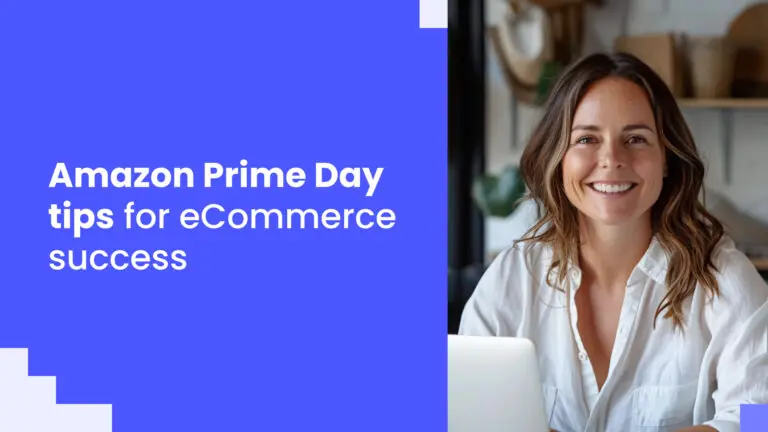Wondering how you can differentiate your Shopify store in a sea of competition? This guide will provide you with the understanding you need to find success on Shopify. We’ll share strategic methods, innovative ideas, and tried-and-tested wisdom. Equipped with these insights, you’ll be able to execute the right steps to make your mark in the eCommerce space.
Fund your inventory with 8fig!
Succeeding on Shopify isn’t a stroke of luck – it’s a carefully executed strategy. Let’s dive into some actionable tips that will put you several steps ahead of your competition.
1. Choose a marketable product
Your product forms the very backbone of your eCommerce business. Therefore, product selection and a solid understanding of market trends should be a cornerstone of your strategy. Your journey to uncover the perfect product for your Shopify store must be both meticulous and methodical.
Pro tip
Choosing the right product is a delicate balance between riding the wave of consumer trends and finding a unique value proposition.
One promising strategy for choosing a product is to create a product that you would like to see on the market. Chances are if it’s a product you would want to buy, others would want to buy it too. That’s what 8fig seller Will did when he created a product that helps people with chronic health issues. He decided to sell a product that filled a need he saw in the market, and found great success.
Another way to choose a product is to identify one that aligns with current consumer trends and offers potential for future growth. Achieving this involves keen market observation and research. Explore customer preferences and needs, online shopping behaviors, and emerging trends in different industries. Use these insights to guide your product selection and sourcing.
However, keep in mind that following trends doesn’t mean you should enter overcrowded markets. Markets inundated with similar offerings often lead to fierce competition, which can significantly impact your profitability. To avoid this, target niches that aren’t overpopulated and offer unique products that fill gaps in the market. Make sure your product is high quality and set it apart by investing in special packaging or offering unique features.
In essence, choosing the right product is a delicate balance between riding the wave of consumer trends and finding a unique value proposition. You won’t succeed on Shopify without a good product, so an effective product strategy is instrumental in positioning your store for success.
2. Harness the power of email marketing
Despite the continuous advancements in digital marketing channels, email marketing remains a powerful tool that is often underutilized by Shopify sellers. It’s one of the surest ways to reach a large audience, since there were an estimated 4.3 billion global email users in 2022, 99% of whom report checking their email every day. It’s also one of the most cost-effective marketing strategies, with an average ROI (return on investment) of $36 for every $1 spent.
We’ll ask a few quick questions to better understand your specific business needs. Then, we’ll build a funding plan tailored to your expenses.
Subscribe to the eCommerce newsletter for
top industry insights
Email marketing builds enduring customer relationships and boosts retention rates, another key factor in building a successful Shopify strategy. Sending regular emails keeps your brand in customers’ minds and gives you the ability to let them know about new product launches, sales, and more.
Pro tip
Email marketing remains one of the most cost-effective marketing strategies, with an average ROI of $36 for every $1 spent.
Developing a well-thought-out email marketing strategy starts with creating a comprehensive email list that includes not only your existing customers but also visitors who have shown an interest in your products. Try offering discounts or freebies if consumers enter their email addresses. Then, send out a variety of email content including:
- Regular newsletters
- Announcements of product launches
- Access to exclusive offers
- Information about upcoming discounts
- News and content that adds value to the customer experience
An effective email marketing strategy isn’t just about promotion – it’s about providing consistent value to your subscribers. Personalize your emails to increase open rates and raise conversion rates, and conduct A/B testing to figure out which subject lines and CTAs work best.
Sharing valuable content, from helpful tips related to your target customers’ pain points to updates about your brand, can nurture relationships with customers, incentivize them to revisit your store. It’s also a great way to foster relationships with customers, encourage repeat purchases, and increase your customer lifetime value.
3. Invest in strategic marketing campaigns
The success of your marketing campaigns relies on factors far beyond the financial investment involved; it hinges upon a deep understanding of your audience. Crafting successful campaigns necessitates an in-depth comprehension of your target customers, their behaviors, preferences, and needs. This allows you to target the right customers and personalize the ads they see, which increases click-through rates (CTR).
Start by conducting detailed audience research. Demographics, interests, purchasing behavior, and preferences are all essential factors that should guide your ad campaign’s direction. Use data-driven insights to craft compelling ads designed to convert potential customers.
Pro tip
Conduct A/B testing on your marketing campaigns to gain insights into which strategies work best. This will ensure the most effective use of your marketing spend.
To improve on the strong foundation you build with research, it’s crucial to maximize your ad spend and ensure your investments yield substantial returns. A/B testing is one of the most reliable ways to do this because it provides you with insights backed by rich data and informative statistics. You can rely on this information when making critical business decisions.
Once your campaigns are out there, your work isn’t done yet, either. It’s important to track the performance of your ads to make sure they continue to serve their purpose. There are a number of marketing KPIs (key performance indicators) that you can track to do so. This approach allows you to continually optimize your ads, ensuring you deliver content that resonates with your audience and brings about desirable outcomes.
4. Build an authentic brand
A great way to convince customers to buy your product is to build a brand they believe in. Creating an authentic brand narrative transcends beyond a visually appealing website. It’s about the story your brand tells, its mission, and how it resonates with customers.
Pro tip
Create a compelling brand persona, relatable tone of voice, and comprehensive messaging strategy to set your brand apart and appeal to both potential and returning customers.
Start by identifying your brand’s unique selling proposition (USP) and core values. If, for instance, your product line aligns with eco-friendliness, this ethos should permeate every aspect of your brand’s narrative. It’s not just about selling products; it’s about positioning your brand as an advocate for environmental sustainability.
Customers appreciate brands that stand for a cause, brands that contribute to the greater good beyond just profit-making. Capitalize on this by crafting your brand story to reflect your mission and values. Share this narrative consistently across all touchpoints, from your website and social media platforms to packaging and customer service.
Building a brand is more than just creating a name and logo. Try to create a persona that customers can connect with on a deeper level. These deeper connections foster a loyal customer base that doesn’t just purchase once but returns to experience the brand time and again.
An authentic brand narrative serves as a strong differentiator in competitive markets, and it can set your Shopify store up for long-term success.
Create a compelling brand persona, relatable tone of voice, and comprehensive messaging strategy to ensure your brand is communicated persuasively, consistently, and clearly to your target customers.
5. Plan ahead to optimize your cash flow
Achieving success on Shopify involves more than the strategies mentioned above. All of the research, strategic thinking, and creativity in the world won’t do much if you don’t have the cash to back it up.
Many eCommerce brands run into a cash flow crunch. They lack working capital due to the gap in time between paying for inventory and receiving revenue from sales. Without cash on hand to purchase more inventory, stockouts are an all too common problem in the world of eCommerce. This can be a huge setback for even the most successful business.
Planning ahead to gain an understanding of your inflows and outflows of capital can be a big help. Then, you’ll know where your weak spots lie and be able to strategize to avoid serious financial problems
It’s a good idea to cut expenses where possible, such as by negotiating with suppliers for a better deal or automating various aspects of your business. With the growth of artificial intelligence technology, there are now countless AI eCommerce solutions on the market that can help your business.
Sometimes, however, you simply need more money. That’s when the right eCommerce funding partner can be just what your business needs to succeed.
8fig: Continuous capital for success on Shopify
There are a number of eCommerce financing solutions out there, and choosing the right one is of the utmost importance.
That’s where 8fig comes into play. We’ve designed an AI CFO solution exclusively for eCommerce sellers. We provide eCommerce sellers with fast, flexible, cash flow based funding that accommodates the seasonal fluctuation of your sales as well as the serious financial tools you need to make better decisions. 8fig optimizes your cash flow for you, so you have capital on hand when you need it. Plus, you retain all of your equity without undergoing credit checks.
You can apply within minutes and receive your funding decision in just a few days.
Take your Shopify store to the next level by signing up with 8fig today!
Popular content
View articles



